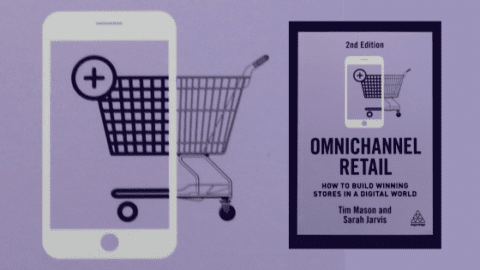Due to the influx of channels and information available — from online to mobile and social — consumers are focusing more on price and experience, rather than brand loyalty. As a result, today’s shoppers are more willing to turn away from their favorite brands if they are dissatisfied with a product or service.
Retailers are responding by revamping their customer retention and loyalty strategies across channels to solidify loyalty. While a vast majority (84.5%) of merchants use customer retention marketing strategies, less than half (48.8%) believe their strategies are working, according to “Making Every Interaction Count: How Customer Intelligence Drives Customer Loyalty,” a new study from Acxiom, a technology and marketing service provider. The report is based on a survey of 129 marketing executives conducted for Acxiom by Loyalty 360, an association for loyalty marketers.
The study concluded that merchants are struggling to characterize and engage with their most loyal shoppers — despite conventional belief that a small percentage of loyal customers contribute to the majority of total sales. In fact, results indicated that only about half (49.6%) of responding merchants are confident that they know their best customers.
However, retailers are furthering customer retention efforts with rewards programs (65.2%), social media (65.2%), and one-to-one marketing strategies (64.1%), according to the study.
To measure customer retention and loyalty, respondents said they utilize the following methods:
- Recency, Frequency, Monetary Value (RFM), which determines how recently customers have purchased, how often they buy items and how much they spend (64.1% of respondents);
- Customer Lifetime Value, which focuses on the measurement of customers’ time-discounted cash flow over their lifetimes (51.1%); and
- Net Promoter Score, or how likely consumers will recommend a store/brand to someone else (33.7%).
Although the growing variety of channels available has helped consumers obtain information and interact with brands in a more intimate manner, retailers are challenged to navigate through a sea of data and accurately pinpoint customers and their behaviors, according to Tim Suther, Chief Marketing and Strategy Officer of Acxiom.
“We live in the era of the customer,” Suther told Retail TouchPoints. “The consumer has unlimited choice and information, and that is having a devastating effect on brands and loyalty, as well as the prices retailers can charge for items. It also presents merchants with an opportunity to better engage with customers. However, we live in a world that is a data tsunami — organizations are overwhelmed by an influx of customer information.” Fortunately, technology is evolving, allowing companies to apply data to their business objectives, Suther added.
Today is “the most opportune time and challenging time for retailers due to the rise of showrooming sites [like Amazon] and new online engagement strategies,” according to Mark Johnson, President and CEO of Loyalty 360. “Retailers that connect with shoppers in a customer-centric manner have an ideal opportunity to drive loyalty. Retailers need to do a better job with gathering data and insights across channels.”
Aggregated Data Spotlights Customer Preferences
Data gathering and analysis allows retailers to better determine the efficacy of specific marketing campaigns and messaging strategies. Acxiom’s report revealed that only 41.3% of organizations aggregate data in order to form insights that capture a holistic view of customers. Overall, the majority (80.4%) of respondents collect data to evaluate program performance, while others tapped data to determine campaign segmentation (68.5%) and trigger one-to-one communications effectively (51.1%).
Top areas on which retailers would like their analytics models to focus are: understanding and improving customer attitudes/behavior (58.7%), brand affinity (45.7%), propensities (41.3%) and channel preferences (41.3%).
“The vast majority of retailers are going to compete to understand their customers,” Suther reported. “This will drive their assortment, marketing strategies, allocation and store layouts, which increasingly will be the basis of how organizations compete. If retailers can’t connect a shopper to a transaction accurately, they’re going to have tremendous issues with their customer-centric strategies.”
In fact, respondents are realizing the enterprise-wide importance of analyzing customer data and communications to measure brand sentiment. Respondents claim the most important outcomes of data insight are better understanding of customers’ attitudes and behaviors (31.5%) and improving the overall brand experience (25.0%), according to the study.
“True brand affinity and loyalty are demonstrated when shoppers have no problem spending or doing more to interact with a brand or retailer, even when logic says they don’t have to engage in any way,” Suther said. “Many retailers are still early in the retention journey, because the pressures of producing same-store sales improvements demands all their attention. But retailers need to take a step back and really see what behaviors and communications will engender loyalty.”












